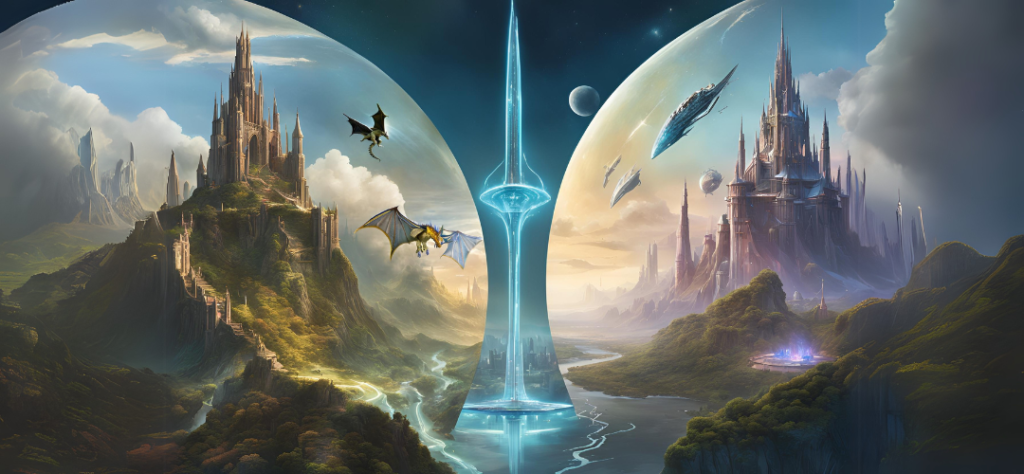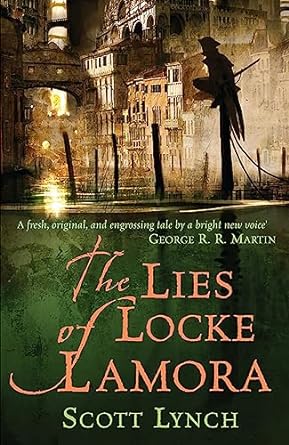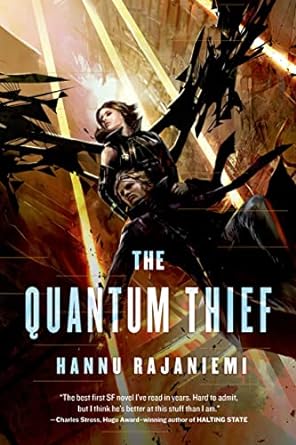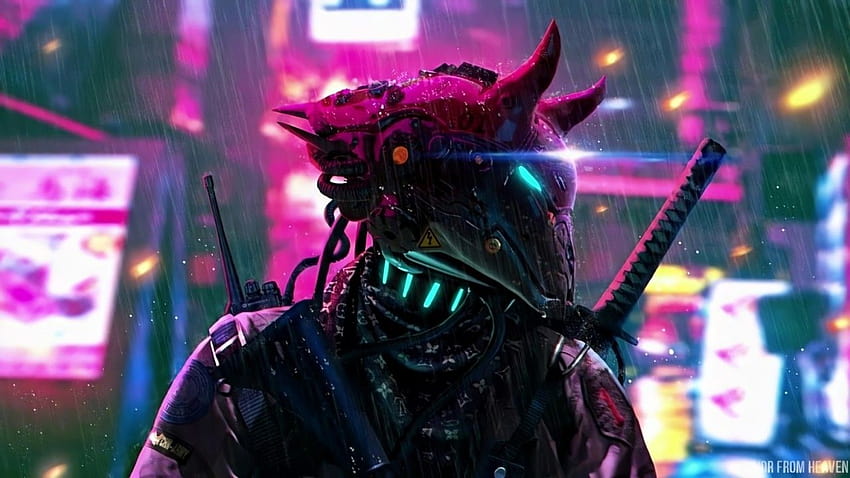Sword, Sorcery, and Sci-Fi Tech:
A NaNoWriMo Decision
How large is the Fantasy Genre? Endless. Writing within this genre offers a boundless realm of creativity, where you can craft magical worlds, conjure mythical creatures, and embark on epic adventures. The same goes with Science Fiction. Writing within this genre offers you the ability to craft technological worlds hosting cyborg, bionic, and scientific wonders that solve issues here in real life. To distinguish Science Fiction from Fantasy we write about the boundaries of science and technology while also examining the human condition in speculative settings.
The two novels below offer the different takes on these two areas:
The Fantasy novel The Lies of Locke Lamora by Scott Lynch is set in the city of Camorr and follows a group of skilled thieves led by Locke Lamora. It’s known for its intricate heists, witty dialogue, and rich world-building.
The Science Fiction novel The Quantum Thief by Hannu Rajaniemi takes place in a post-singularity future where advanced technology and post-human beings exist. It features complex heists and explores themes of privacy, memory, and identity.
While both novels involve heists and intricate plots, Scott Lynch leans his writing toward the fantasy genre with its medieval-like setting and magic elements, while Hannu Rajaniemi is firmly rooted in a futuristic, post-singularity science fiction setting where technology has surpassed control of humanity and post-humans are retrieving memories.
In the realm of storytelling, every genre presents its own set of unique challenges and considerations. For instance, in the fantastical worlds of fantasy literature, one of the foremost challenges lies in the meticulous art of world-building. Take J.R.R. Tolkien’s Middle-earth, a realm so intricately crafted with its own languages, cultures, and histories that it has become an archetype for world-building excellence. Meanwhile, science fiction grapples with the task of striking a balance between imaginative technological advancements and scientific plausibility. Consider Isaac Asimov’s “Foundation” series, where futuristic technology coexists with scientific principles to create a plausible and captivating future. These are just two examples of the myriad challenges and considerations that authors face when crafting stories in different genres, each demanding its own brand of creativity and expertise.
Both types of genres have complex characters, conflicts and tensions, diverse cultures, fantastic world-building, unique systems (one of magic, one of technology), consistent tone, character growth, and symbolism and themes.
Bringing the fantastical tales to life you might want to explore:
- Legendary Creatures: Introduce mythical creatures and beings that are integral to your world. Whether it’s dragons, elves, or unicorns, make them unique to your story and culture.
- Subverting Tropes: While embracing classic fantasy tropes is fine, consider subverting or reinterpreting them to bring a fresh perspective to your story.
- Research and Inspiration: Draw inspiration from mythology, folklore, and history. Research can provide rich source material to enhance your world-building and storytelling.
- Show, Don’t Tell: Instead of lengthy exposition, show the fantastical elements of your world through character experiences, dialogue, and sensory details to immerse readers.
- Foreshadowing: Plant clues and foreshadowing hints early in the narrative to create anticipation and intrigue about future events and revelations.
- Read Widely: Explore a wide range of fantasy literature to understand the genre’s conventions, trends, and possibilities. Reading diversely within fantasy can inspire your own writing.
Bringing the science fiction tales to life you might want to explore:
- Science and Technology: In science fiction, technology and scientific concepts play a central role. Ensure that your futuristic or speculative technology is grounded in some form of scientific plausibility. Research and explore emerging technologies.
- Ethical Dilemmas: Consider the ethical dilemmas posed by your technological advancements. Science fiction often explores the consequences and moral implications of scientific progress. Use your story to raise thought-provoking questions.
- Complex Characters: Create complex characters who grapple with the implications of futuristic technologies. Dive into their motivations, flaws, and moral dilemmas as they navigate your technologically advanced world.
- Themes of Humanity: Address themes related to humanity’s place in a technologically advanced future. Explore questions about identity, the nature of consciousness, and the impact of technology on society.
- Speculative Societies: Craft believable future societies and examine how they function. Consider the social, political, and cultural implications of technological advancements. How does society adapt to new technologies?
Choosing between these two genres as a writer ultimately comes down to the stories you wish to tell and the themes that resonate with you. If you’re drawn to exploring the limitless boundaries of technological advancements, ethical dilemmas, and the future of humanity, then science fiction may be your chosen vessel. Conversely, if you yearn to craft magical worlds, embark on epic quests, and delve into timeless themes of heroism, destiny, and the power of imagination, then the realm of fantasy awaits. Or maybe you don’t want to choose. Think of books like Wheel of Time by Robert Jordan or Dune by Frank Herbert where both stories involve some technology and some fantasy aspects.
Even my own novel Drayton’s Discoveries, coming out this year in December, offers a new planet, with the gathering of diverse species and a space battle that the geekiest nerd will love. Be on the lookout.
Here is a short snippet of a ship vs ship chase scene.
They both remained quiet for a moment until she noted the direction of the single flyer, the Icarus. He was headed for the back side of the planet. A duo patrol was pacing along that side.
“Major, he is going after our pair.”
“Record message, immediately.”
“Aye-aye. Recording open.”
“Lieutenant Gerald, get the hell out of there. We fielded the Icarus inbound for under six minutes. Get to the translation grid. That’s an order. Send, now.” His tense voice commanded as she hit the relay.
She also hit the ship-to-planet alarm. Now everyone would be aware. Major Cross shifted his reach to tap the grid visually. He blew it up to note the translation grid in full relief. The two smaller fighters were heading toward it, their electronic Ident clear. Their speed paced as the tracker blip angled down to a projected intercept. Dremit touched the screen to get the distance reading, point to point. The larger Icarus would easily overtake the fighters if they didn’t…then he saw it. He retouched the distance. “Mark 23-second countdown, mark now.”
“Twenty-three seconds, and counting, sir,” Asissa set a counter. The smaller fighter increased velocity, accelerating and he saw the Icarus trying to adjust the angle to enter a firing path.
“Twenty-two seconds—twenty-one seconds—twenty seconds,” an electronic voice began to speak calmly from the nav system.
“I calculate at twelve seconds Gerelds team will be out of range, sir.” Asissa tapped rapidly on an embedded calculator to the right of the Nav board.
“But a fire solution may be activated before then. Can you give me the time separation for a pulse gun spread, perhaps three rounds? It’s going to be so close. Salas al dom, salas al dom,” he mumbled under his breath the Alteric Prushion mantra for capturing luck.
“Seventeen seconds—sixteen seconds—fifteen…”
“They fired sir. The Icarus actually fired,” Alissa’s voice held disbelief. “I show three round pulses at five, three, and one-second intervals. No…wait, there’s a fourth. Shouldn’t we do something, sir? He can’t just fire on our ship,” her hands clutched the Nav board edges tightly.
Major Cross shook his head. “Let’s deal with this one issue at a time, Lieutenant. Translation will probably absorb some of that heat. I’m sending the translator crew some warning. Only seconds but if that last shot gets caught when Lt Gerald translates, the transfer deck will be a hotbed.”
Thirteen seconds—“
Alissa watched the pulse fire moving closer to the two fighters on her screen. The Icarus continued to pursue but took a crazy final turn directly toward the planet and hit the atmosphere, entering only to disappear into the Ionic storms. Alissa tried to recover the signal, but it was instantly broken.
Her predictions though, for the pulse fire velocity was right on the money. Gerald’s two fighters maneuvered quickly and at five seconds the first pulse missed, with the range too short. The second pulse also missed by a much lesser margin, its explosive force veering the two jets slightly. They quickly entered the translation field and disappeared off the radar, but the third pulse translated with them. A fourth lone pulse overshot and exploded passed the translation area.
“Zero seconds till impact.” The autovoice ended the count in the following quiet.
Major Cross had a hard glint in his eyes, his lips flattened with anger. “That crazy Trabid. Plot a heading for direct intercept, Lieutenant. Take us in on his heading. If he lands, we can arrest him for war crimes.
“I’ve marked his entry at 31°34’23 north, 51°21’27 west. He is approximately 17 minutes from the crater’s edge by air. Do you think he is going to make that flight? Even if we fly mock 7, we won’t hit the crater before him.”
“If his pilot is good and his craft was enforced with the thicker outer alloy to take the hits, he might just make it through the storms.” Dremit dropped his eyes from the entry point marked on his screen. He stood still tapping on his tablet for a moment. His eyes focused in on a blinking notify comm from Captain Hopper. He tapped to read it. His shoulders relaxed as his eyes scanned the message.
“You’re right, Alissa. We do not have enough speed or close enough range to stop him. But I know someone who does. Get us back to translation. Let’s get some active comm and see what kind of damage that idiot did.” His ship immediately altered course and turned toward Atax. From his distant visual, he zoomed in on the translation area where, from the outside, nothing seemed out of place. Still, he knew that third pulse entered along with his two fighters. His imagination explored all sorts of scenarios that happened below ground. At a minimum, the flight deck is going to be one hell of a place to be right now.
In the end, the most important factor is to let your passion guide you, and whether you traverse the distant galaxies of science fiction or the enchanted realms of fantasy, remember that both genres offer boundless opportunities to ignite your imagination and share your unique storytelling voice with the world.
I also want to give a quick shout-out to PLOTTR software which is very intuitive. My new favorite writing aid. This plotting software is da bomb. Use any of my affiliate links below and I might get a small commission. Thanks.
Check out my Youtube channel for PLOTTR videos @jlnichauthorsff
Joseph Michael’s Learn Scrivener Fast e-course
Please read and review my serial publishing novel, Sparrow’s Legacy, on Kindle Vella. You can read the first three chapters free on Amazon by searching for “Sparrows Legacy Kindle Vella” or clicking here. I. Please subscribe to my website if you want to be notified when I’ll be publishing or to get free samples of my work.
JLNich, Science Fiction Fantasy Author






